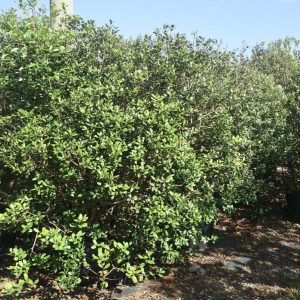Description
Fagraea fragrans (Tembusa) is a medium to large, southeast Asian timber tree. Tembusa grows to a height of 75 feet in the wild with a long straight trunk. The bark is dark brown with deep fissures. Additionally, it has a conical to irregular shaped crown of moderate density. The leaves are evergreen, light in color, opposite, simple, entire, elliptical, somewhat leathery and 4 to 14 by 5/8 to 2.25 inches. Moreover, the flowers are borne in clusters that are 4 to 5 inches long. The clusters have numerous whitish-yellow fragrant blooms with long extended stamens. Also, the flowers attract insects.
Furthermore, the fruits are small, smooth and round with a pointed tip. The fruits are less than 1/2 inch in diameter, ripening from green to red; they are bitter tasting but birds eat them. Each fruit contains about 20 tiny brown seeds, used for propagation. Fagraea fragrans (Tembusa) wood is very hard and resistant to wood insects; it is used for sawn timber, to make chopping blocks, flooring and is excellent for charcoal and fuel. The leaves and twigs are used in traditional medicine. Growth requirements of Tembusa are lacking, but it is a pioneer tree of burned-over areas, so it is assumed it can tolerate various soils, if well-drained. As an ornamental, the tree benefits from pruning, and is a good shade tree in large gardens and parks and along roads.






